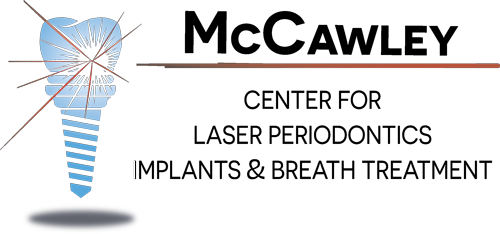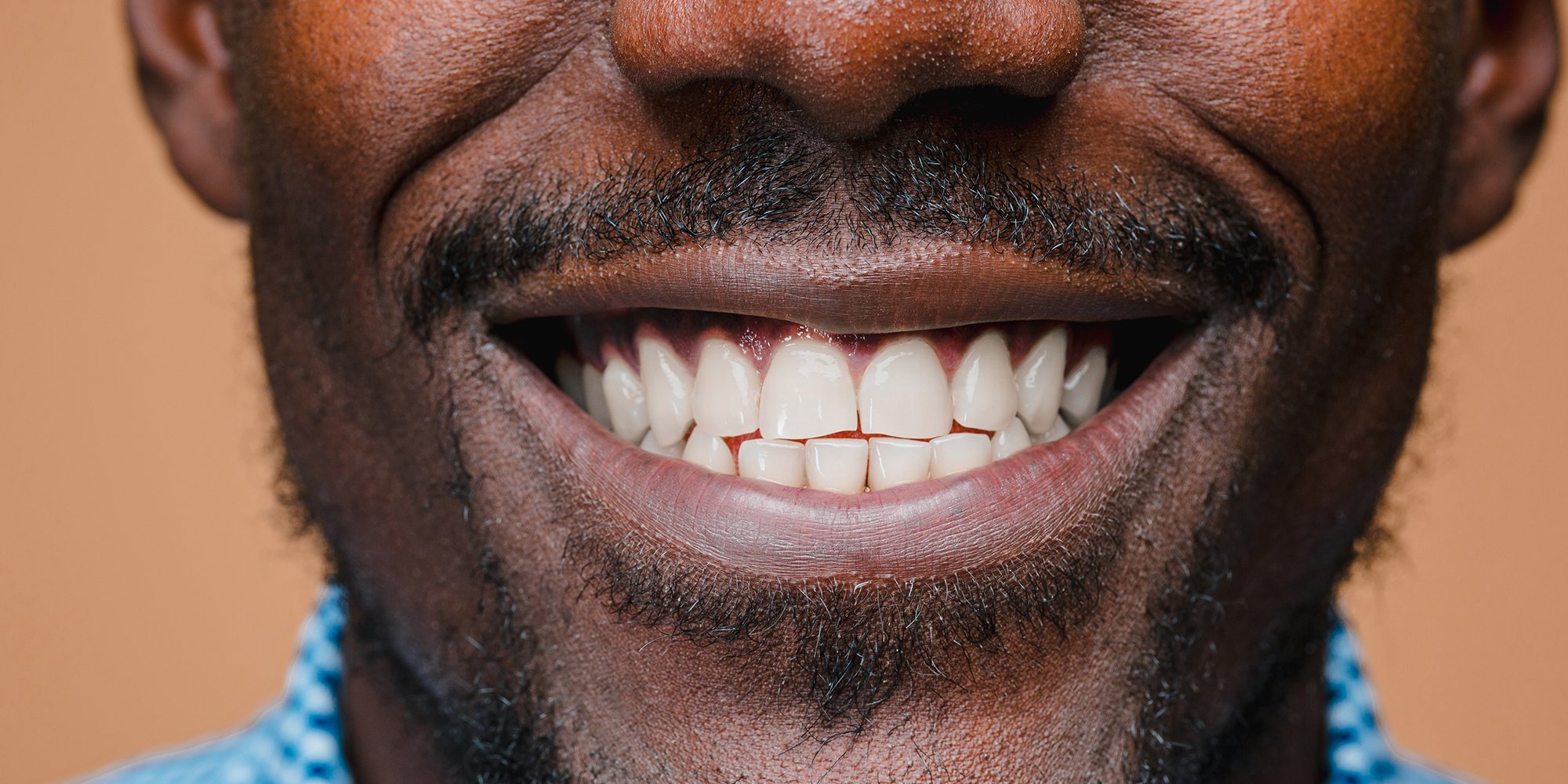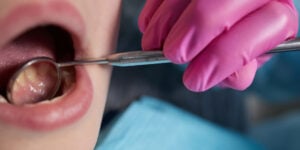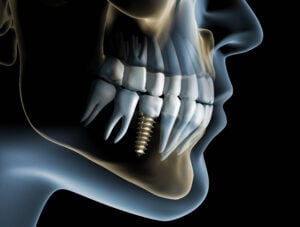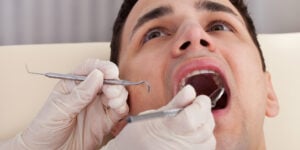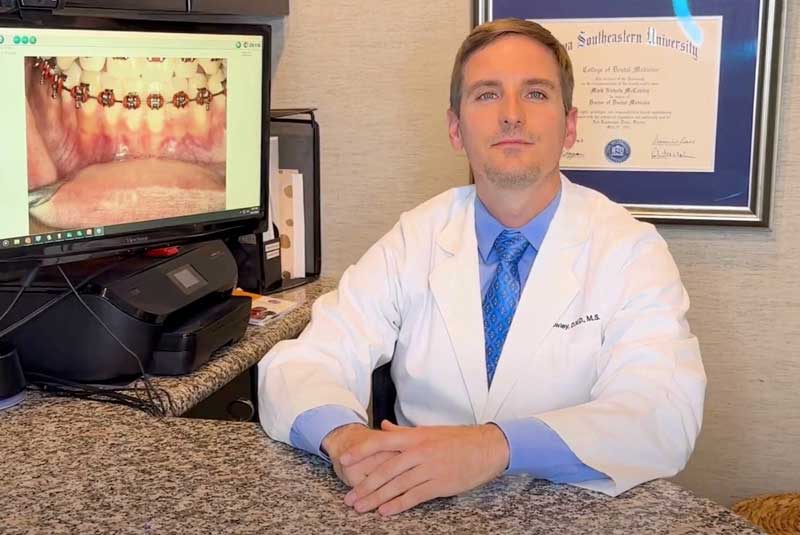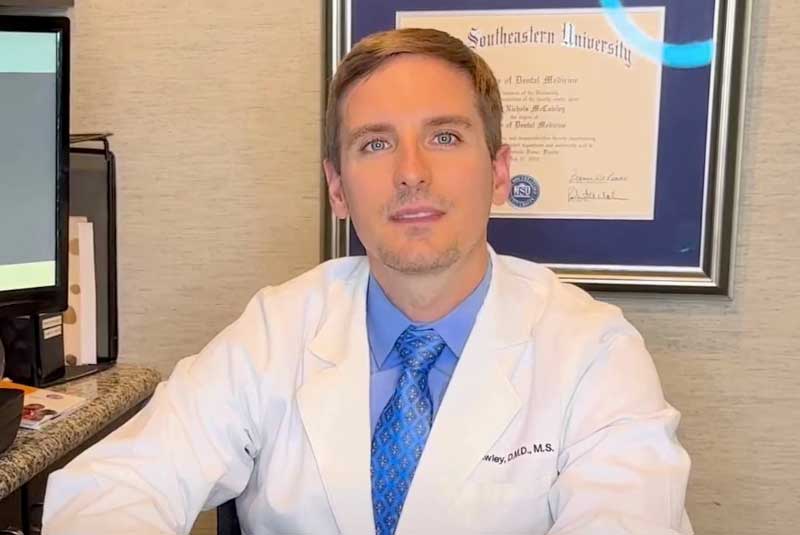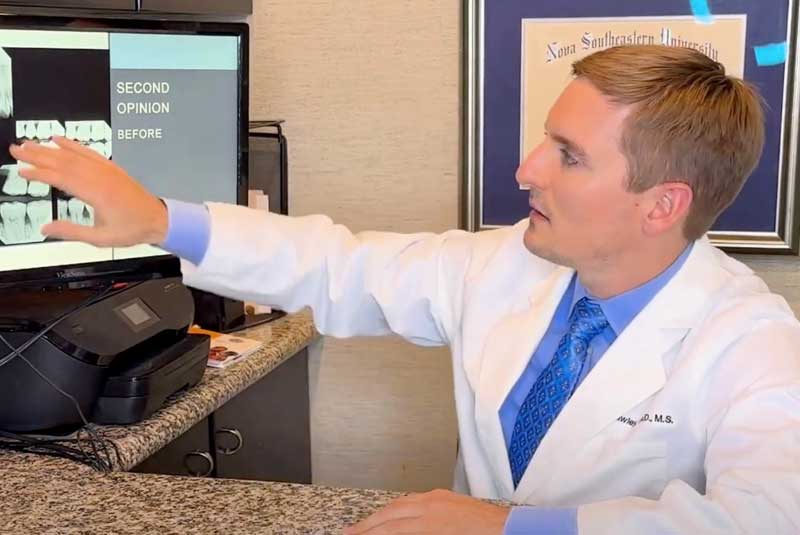| ✅ Reviewed by Dr. Tom McCawley | 🕒 Reading time: four minutes |
If you are dealing with receding gums but hesitant about traditional gum grafting, you might be a good candidate for the Pinhole Surgical Technique (PST™).
This minimally invasive procedure can reverse gum recession without scalpels, stitches, or the discomfort typically associated with grafting.
Let’s break down how this technique works, when it’s a good option, and what to consider when choosing a provider.
What Is the Pinhole Surgical Technique?
Pinhole Gum Surgery is a specialized procedure used to treat gum recession. Rather than removing tissue from the roof of your mouth and suturing it in place (as in traditional grafting), this method uses a small needle-sized entry point above the recessed area.
Using specially designed instruments, the gum tissue is gently loosened and repositioned over the exposed root surfaces. Collagen strips are placed to help stabilize the area during healing—no stitches required.
Key Benefits of Pinhole Surgery:
- No cutting and less sutures
- Faster healing and minimal discomfort
- Instant cosmetic improvement
- Treats multiple teeth in one visit
Watch:
In this discussion with Dr.Joseph Nemeth, Dr. Mark McCawley walks through a real case involving upper canine recession. He explains how gravity, muscle tension, and tissue thickness affect outcomes, and why experience is critical in high-risk areas.
When Is Pinhole the Right Choice?
Pinhole works best for patients with mild to moderate recession, especially when there is still enough gum tissue to move and reposition. It’s ideal for people with:
- Cosmetic concerns (exposed roots, longer-looking teeth)
- Sensitivity to hot or cold
- Recession without active gum infection
- Thin gum tissue from orthodontic movement
In the example shown below, the upper canines (eye teeth) had receded significantly—a notoriously difficult area due to muscular tension and positioning in the arch. Yet with experience and proper planning, full coverage and tissue thickening were achieved, giving the patient both aesthetic and functional improvement.


Before and after Pinhole Gum Surgery on upper canine and incisor teeth. Notice how the gum tissue has been repositioned to cover exposed roots and create a natural, healthy contour.
Pinhole vs. Traditional Gum Grafting
See how Pinhole Surgery and traditional grafting differ:
| Feature | Pinhole Technique | Traditional Grafting |
| Invasiveness | Minimally invasive | Requires tissue removal |
| Sutures | Less | Yes |
| Recovery Time | Shorter | Longer |
| Aesthetic Outcome | Very natural-looking | Depends on donor tissue |
Why Experience Matters
Not every provider offering pinhole surgery has the experience to handle complex recession cases or tailor the technique to your anatomy.
As Dr. McCawley explains: “It takes experience to know what’s achievable reliably… You don’t want someone who just took a weekend course and is trying it out for the first time.”
Especially for areas like lower canines, where muscle pull and gravity work against healing, careful technique and case selection are essential.
Book a Consultation for Pinhole Gum Surgery in Fort Lauderdale
If you are concerned about receding gums, the right treatment can restore both health and confidence in your smile.
Dr. Mark McCawley was personally trained by Dr. John Chao, the inventor of the Pinhole Surgical Technique, and has extensive experience treating gum recession. He is one of only 30 in the world certified by Dr. Chao as an Advanced Pinhole Surgeon and has been invited to lecture at Dr. Chao’s courses in California.
To book an appointment at our periodontal office in Fort Lauderdale, FL, call (954) 807-4829 or visit us at 800 East Broward Blvd #706 Fort Lauderdale, FL.
FAQ
Pinhole gum surgery offers results that can last for many years when you maintain good oral hygiene and attend regular periodontal checkups. However, no treatment can make gums recession-proof forever. Factors like aggressive brushing, clenching, or untreated gum disease can cause recession to return over time.
Most patients say the procedure is surprisingly comfortable. Since it doesn’t involve cutting or stitches, there’s typically much less post-op pain than traditional grafting.
Recovery is usually quick and comfortable. Most patients return to their normal routines the next day. Minor swelling or sensitivity can occur for a few days but typically resolves on its own. You will be given instructions on how to keep the area clean without brushing directly over the treated sites while your gums heal.
Coverage varies depending on your plan and whether the procedure is considered medically necessary. Our team can help you check with your provider beforehand.
